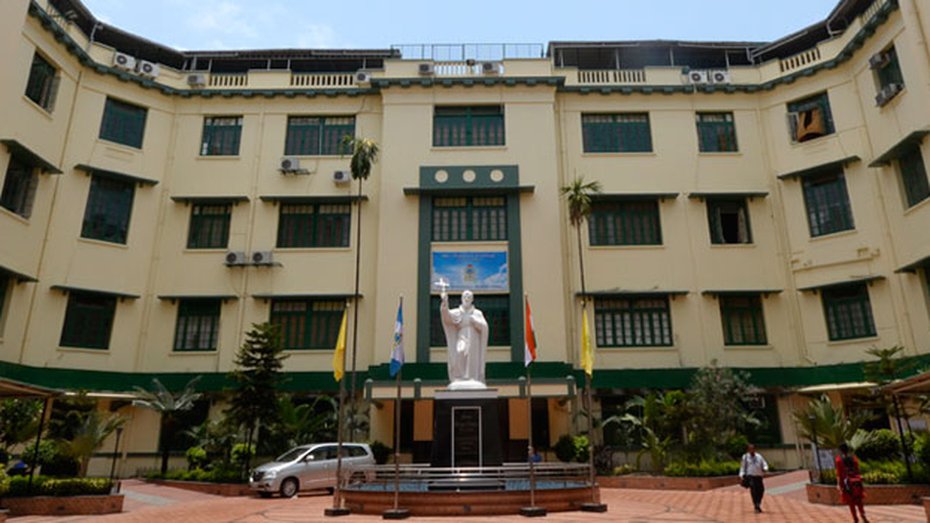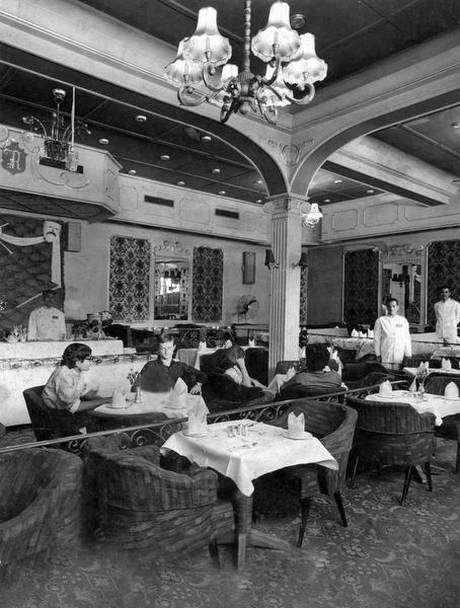Monthly Archives: September 2019
30 a
29
28
50 years of NSS at Xavier’s
At St Xavier’s College, every student is a NSS volunteer and the social outreach activity is mandatory for all students

St Xavier’s College students on Tuesday marked 50 years of the institute’s National Service Scheme (NSS) by pledging to reach out to poor students and ensure their mental wellness and fight plastic pollution.
At least 230 students, divided into 23 teams, discussed education, health, environment and the need for mental wellness of young students.
At the end of the sessions, the teams concluded mental wellness and plastic pollution were two major problems and their “active participation” was needed to resolve them.
The NSS — sponsored by the youth affairs and sports ministry — was started at St Xavier’s on September 24, 1969, the day it was launched in the country for college and university students.
At St Xavier’s College, every student is a NSS volunteer and the social outreach activity is mandatory for all students. “The primary objective of the event was to encourage students to work together for social causes,” Father Dominic Savio, principal, said.
A seminar on “Social Responsibility of College Students — Its Need and Relevance Today” was held on the campus to mark the occasion. NSS volunteers of the college regularly visit 12 villages of South 24-Parganas where they are involved in welfare activities for poor students.
“At least six of the 23 teams spoke on the need for mental wellness and the role students of St Xavier’s could play in helping those suffering from low mental well-being,” Sheryl Francis, the director of NSS and the college’s social work department, said.
The teams had been asked to come up with suggestions on how the problems could be resolved. A team suggested that the process start on the campus. The experience could be used to help poor students.
For example, someone in a class may be going through a crisis at home. “There could be someone showing signs of low mental well-being. He/she may be silent…. We can start an exercise to identify our friends who show such signs. We can provide them with a platform to address their problems,” according to a suggestion from one of the teams.
Arranging regular adda where students get to share their day’s happy and sad moments was another suggestion. The same process could be followed to help poor students outside the campus.
Almost all the students said they were “concerned” about plastic pollution. The students decided to ban the use of plastic on the campus.
source: http://www.telegraphindia.com / The Telegraph, online edition / Home> West Bengal / by Mita Mukherjee in Calcutta / September 27th, 2019
Time stops at Trincas, as it celebrates its 60th birthday this weekend
“It was a magical time: gentlemen in suits and ties and ladies in evening gowns, all decked up to eat, drink, dance and sing-along. In the 1970s and ‘80s, Trincas was dominated by the Anglo-Indians. It definitely is Calcutta’s most nostalgic location.”

Usha Uthup has more reason than most to be nostalgic about the iconic restaurant and performance venue — her maiden performance at Trincas was what made her the darling of the city, and eventually the country.
Trincas, one of Kolkata’s most iconic venues for a family evening out, is celebrating its 60th birthday this weekend. It was established by a Swiss man, remembered today only as Mr. Trinca, back in the 1930s as a bakery and tea house, but was taken over by Ellias Joshua and Om Prakash Puri in 1959, then shutdown for extensive renovations before reopening in 1961. Famous for live music performances, fresh food and a wide range of drinks at the bar, it became Park Street’s main attraction.
Celebrating music
The Puris eventually innovated again, sectioning off a third of the floorspace to make a quiet area and pioneering Szechuan cuisine in the city in the newly christened ‘Ming Room’. But what Trincas has been known for most, are its legendary live music performances. Carlton Kitto, an Anglo-Indian jazz guitarist, was followed quickly by Usha Uthup, whose maiden performance at Trincas was in 1969. Returning to headline the Diamond Jubilee celebrations over three days, October 27, 28 and 29, Uthup recalls her four decades at Trincas — “The people and their dress have changed, Trincas has not. It’s the same great music, good food and drinks and people enjoying themselves”.
Uthup found her way to Trincas after she began her career in the erstwhile Bombay at the Talk of the Town bar, now known as Not Just Jazz By The Bay. Her father was Vaidyanath Someshwar Sami Iyer, so returning to Madras’ Mount Road to perform in the basement of what used to be the Safire theatre complex in a club called Nine Gems, was homecoming for her.
Cornel Bloud, the lead guitarist and occasional singer who has been gracing Trincas’ stage just about every night for the last 25 years, also has fond memories. “The crowd has changed a lot, we don’t see many older people like we used to, now it’s mainly younger people coming to relax with their friends, but they all come to enjoy themselves. Trincas is a brand: time will pass but people know to come here for a good evening out with their families.”
Today’s customers are far more relaxed, jeans and T-shirts have replaced suits and dresses, save for the handful who have been stalwarts for decades. Office goers throng the restaurant on weekdays, while those seeking an alternative to the thumping bars and nightclubs of the city come to Trincas to listen to the Eagles and other classics that walk them through the 1960s, ’70s and ’80s. Weekends see the wooden dance floor in front of the stage cleared for those who can jive, twist and waltz — often gracefully, sometimes not so. Sing-alongs are also popular, with the band and lead singers frequently taking song requests scribbled on napkins.
Om Prakash Puri’s grandson Anand, having spent decades running similar establishments in Mumbai and Delhi, has now returned to the family business with a keen eye on keeping pace with changing customers. Tall with a managerial presence, Anand sits across the table from me narrating his plans for the coming decades. He coordinates the waiters with an easy flick of the wrist or tap of a finger. “I’ve seen Cal change. It’s not the sleepy town it used to be, so many venues for live music, ranging from rock to indie, have popped up everywhere. I see writers, poets, musicians all over the city. I need to let them know Trincas is for them too, while not altering where Trincas has come from.”
Anand’s calm exterior hides myriad plans milling about on a war footing below the surface. He is setting about replacing the flowery curtains with the old, blood-red velvet drapes, tied back with old-fashioned thick ropes. Old pictures telling the story of the restaurant are going up, as are small red table lamps. His eyes dart around his family’s pride — “See the wall here?” — he points at a creamy space between speakers behind him.
“I’ve dug up some old photos for it. And there used to be a mirror here, I am going to get that back up, too.” The back of the stage has also gone back in time. “Do you remember the mirrors?” he asks me, and I nod. “Well, they too have gone. The old photos showed a red velvet sofa-backing type of backdrop, so I copied that and this is what we now have.”
While other live music bars and restaurants try their level best to keep up with rapidly changing times, Anand strikes a fine balance between taking Trincas even further back in time, and looking forward. As Trincas celebrates 60, a new generation of Puris are looking at 100.
source: http://www.thehindu.com / The Hindu / Home> Life & Style / by Anthony Khatchaturian / September 25th, 2019
25
24
Mini Europe by the Hooghly
Kolkata’s splendid history holds impressions of waves of European cultures
Kolkata :
Across the River Hooghly – a tributary of the River Ganges – one can still see signs of various European countries that had created their own unique areas, to facilitate trade through Calcutta’s Port. For those not too familiar with Bengal’s early history, a visit to the area is a real treat as one can see signs of the settlements of various European countries, along the banks of the Hooghly River.
The countries that settled here, creating their own spaces were Denmark, France, Holland and Portugal. As one drives along the riverside road, it is fascinating to see the structures that have survived over the years. The area occupied by the European settlement is the present Hooghly District. Fortunately, these countries have begun to appreciate the historical value of these old ruins. Denmark has recently restored a Tavern at Serampore and tourists now have a splendid place for a meal.
It was almost a century after the Portuguese adventurer Vasco da Gama landed on the western coast of India in 1498, that other European countries realised that they were losing out on trade with India. Soon the European settlements began inroads into Bengal, with the Hooghly being their main source of navigation. The first to create a settlement were the Portuguese who settled down at Bandel, long before the British made Calcutta their stronghold. They were soon followed by the Dutch in Chinsurah, the Danish in Serampore and the French in Chandannagar.

The Portuguese also built the first Christian church in Bengal in 1599.
In 1632, Mughal Emperor Shah Jahan attacked the Portuguese settlement and demolished their small fort and their church. The head of the Church, Father Joan De Cruz, was taken prisoner to Agra, where he was thrown in front of a ferocious elephant, who instead of trampling the priest, lifted him up and seated him on his back. Shah Jahan was so impressed that he freed the priest and provided free land for a new church.
Interestingly, such miraculous episodes continued. During another siege, Taigo, a local Christian, in a desperate bid to save the statue of Mary, dived into the Hooghly with it and was never seen again. However, on the day of the inauguration of the church, it was found on the river bank. Re-established, the statue came to be known as “Our Lady of the Happy Voyage”.
There is also a splendid Imambara worth seeing in Bandel. Designed by architect Keramtulla Khan, the two-storied building is centred round a rectangular courtyard, decorated with fountains and pools and has a sundial that is a great attraction. The structure has two 85-feet high towers with 152 stairs in each – one for men and the other for women. Built in the memory of the philanthropist Hazi Muhammad Mohsin, the structure took 20 years to build. The three-storied structure connecting the towers contains a clock at the top story. The lower rooms are said to contain splendid chandeliers, but are unfortunately out of bounds to the public.
The Dutch settlement ended in 1825, the Dutch fort of Gustava was demolished by the British and very little remains of the Dutch rule in Chinsura. The Dutch church was demolished in the 1980s, but the Dutch cemetery still stands containing an assortment of graves under the shade of ancient trees, with the oldest dating back to 1743.
It was after receiving Mughal Subedar Ibrahim Khan’s permission in 1673, that the French colony Chandannagar was established as a trading post on the right bank of the Hooghly River. Bengal was then a province of the Mughal Empire. The colony became a permanent French settlement in 1688 and in 1730, when Joseph Francis Dupleix was appointed governor of the city, its development included 2,000 new houses and a considerable amount of trade and commerce. For a short while, Chandannagar also became the main centre for European trade in Bengal.
Today, Chandannagar still boasts considerable French heritage.
The Strand is considered the most beautiful stretch of the Hooghly River. The tree-shaded promenade along the river is about 1km in length and 7 meters in width, and the area houses a number of French mansions. The Durgacharan Rakshit Ghat on the Strand is also an interesting mix of Indo- French architecture.
Also on the Strand is the Dupleix Palace Museum – one of the oldest museums of the region housing French antiques and period furniture. Just off the Strand is the Sacred Heart Church, dating back to 1884. It was designed by French architect Jacques Duchatz and has beautiful stained glass windows. A French colony till 1950, French is still taught as a third language in many of Chandannagore’s schools.
To make you aware that you are in French surroundings, there is the Chandannagar Gate constructed in 1937 to mark the Fall of the Bastille. Etched on stone is the slogan ‘Liberte, egalite, fraternite’ (Liberty Equality and Fraternity).
Serampore , the Danish Settlement, remained under Danish rule till 1845, after which the Danish Governor decided to sell it to the British East India Company. The Serampore college, remains well maintained with its grand facade. Danish missionary Carey along with Ward and Marshman, began the Serampore Mission Press and published the first Bengali translation of the Bible. They also launched the “Friends of India” newspaper. Another outstanding contribution was the installation of India’s first paper mill at Battala, set up by Marshman, which was powered by a steam engine.
The Baptist Mission Cemetery in Serampore contains the family graves of Carey, Ward and Marshman – three personalities whose immense contribution to literacy, cannot be disregarded. Between 1801 and 1832, the Serampore Mission Press printed 212,000 copies of books in 40 different languages.
IANS
source: http://www.gulfnews.com / Gulf News / Home> Asia> India / by Shona Adhikari / September 13th, 2019